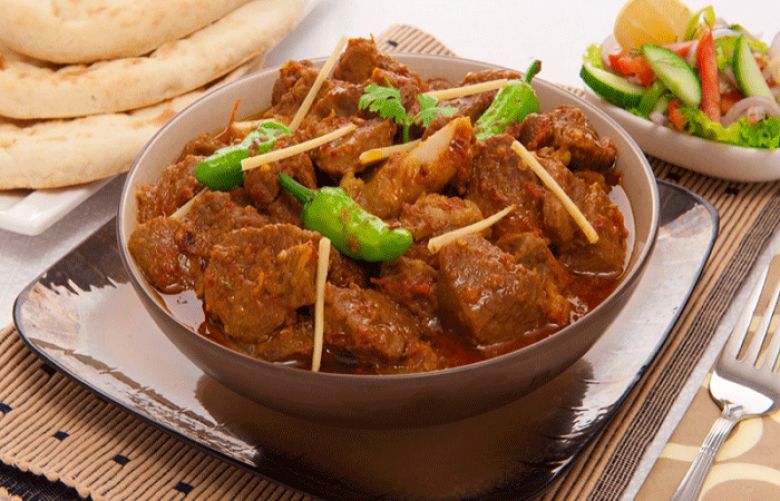Many years ago, while getting dressed in my Karachi flat, I had the BBC World channel on, and heard the announcer mention something he called Ball-tee in his plummy British accent.
Not having a clue as to what he was talking about, I paid him attention and discovered that he was referring to balti gosht, that great favourite of desi carnivores. According to him, it was also the preferred meal for British football fans after they had consumed many pints following a game involving their teams.
But more revealingly, the announcer solemnly informed his audience that the dish originated in the valley of Baltistan. I suppressed a laugh as I have been to the picturesque but poor area in Pakistan’s mountainous northern region, and am familiar with the shortage of fuel and meat there.
But this is a common attempt to romanticise the origins of balti gosht, or as the more commonly known karrahi gosht. Obviously, the wok-like pan used for its preparation has given both variations their name.
The street karrahi uses a lot of tomatoes that leave a distinct, thickish sauce ideal for dipping your naan in. I first came across the dish when I moved to Lahore in 1967 and was taken to Abbot Road, the home of takka-tak, or gurda-kapura. One guy there also did a wicked karrahi, and our mouths would salivate as we waited for him to serve us.
Mulling over the origins of balti gosht, the dish brings back fond memories of old friends
Abraham Joshua became a good friend in those days, and he knew a lot about Lahori street food. Also known as Kaka, he was the member of a distinguished Christian family. Sadly, he and his family have all migrated to America, and who can blame them? Many years ago, when I was living in Washington, I called Kaka for his karrahi recipe and he immediately obliged.
Recently, I thought I would cook it again, and once more, Kaka was more than helpful, sending me this recipe:
Ingredients
4 pounds [just under two kilos] boneless goat/lamb meat, diced
4 seranno peppers [hot green chillies], chopped
2/3 large ripe tomatoes cut in half
1/4 pound unsalted butter
12 cloves garlic, finely chopped
1/2 inch x 1 inch ginger, finely sliced
salt to taste
1 teaspoon red ground chilli powder
1 tablespoon ground coriander
1/4 teaspoon ground turmeric
Method
Put meat in a wok, add all the veggies, spread out on top; cut butter and spread on the sides of wok. Throw in all dried spices. No water: add only if meat does not cook with liquids released. Start cooking on high heat with the wok covered.
Start to mix when liquid appears. Taste for salt and spices. Lower heat and let simmer till the gravy forms. Keep stirring and checking from time to time to see if the meat is cooked.
Add water only if necessary. It is cooked when the butter separates. Extra butter will not hurt. Eat hot with fresh naan.
Trying it recently, I was transported for a moment to Kaka’s welcoming dinner table in Lahore when he and his charming wife Linda entertained so generously. This is the power of food shared with old friends: the taste buds remember when the brain cells don’t.
But more revealingly, the announcer solemnly informed his audience that the dish originated in the valley of Baltistan. I suppressed a laugh as I have been to the picturesque but poor area in Pakistan’s mountainous northern region, and am familiar with the shortage of fuel and meat there. But this is a common attempt to romanticise the origins of balti gosht, or as the more commonly known karrahi gosht.
This reminds me of a new meat dish my brother’s talented cook Zain served. Tender and not very spicy, it consisted of excellent goat meat gently simmered in finely sliced garlic and ginger, with a little freshly ground black pepper. I have to cook this dish before I am absolutely sure of the recipe, but obviously the quality of the meat is central to the success of this simple dish.

